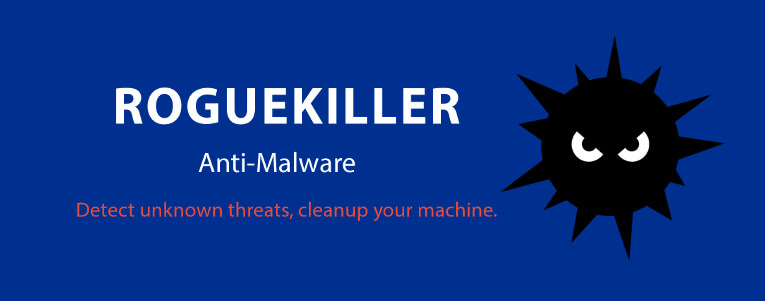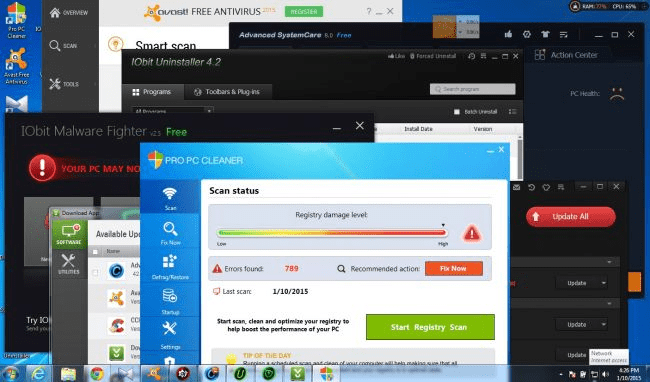Anti Pups/adware Gratuit
Windows Defender can detect and remove malware and viruses, but it doesn't catch Potentially Unwanted Programs or crapware by default. However, there is an opt-in feature which you can enable by editing the registry, to make Windows Defender scan and eliminate adware, PUAs or PUPs in real-time. Protect your PC from malicious threats from malware, spyware, trojans, and more. Try the Professional X Edition for 24/7 real-time protection of over 1 billion threats, AI-powered detection engine, immediate threat blocking, automatic database updates, scheduled scanning, and more. Malwarebytes Anti-Malware. Outil de protection contre les logiciels malveillants. Licence: Gratuit OS: Windows XP Windows Vista Windows 7 Windows 8 Windows 10. DE-BUG is an application developed by Webroot to remove Potentially Unwanted Applications (PUAs/PUPs) and Adware. It is capable of detecting unw. ClearLNK 2.9.0.16. Nov 04, 2015 Antimalware programs like Malwarebytes pop up warnings when they detect “potentially unwanted programs” you might want to remove. People call PUPs many other names, including “adware” and “crapware.” You almost certainly don’t want these programs on your computer, but they’re categorized differently for legal reasons.
How do we identify potentially unwanted software?
Analyzing and categorizing potentially unwanted software is a complex problem. Developers of potentially unwanted software rapidly evolve their products. Some even contain a few characteristics that resemble legitimate software to mask the unwanted functionality. It's an on-going process, and we work hard to identify common behaviors that help provide you the highest level of protection. In some cases, where the behavior is questionable, we will list the application even if it does not neatly fit into the listed criteria. In other words, we use our judgment.
While we highlight potentially unwanted programs, you then make a choice in the exclusions list and select what you want to keep or remove.
Here are some of the criteria we use:
Anti Pups/adware Gratuit Pour
- obtrusive, misleading, or deceptive advertising, branding, or search practices
- using pop-ups, pop-unders, ad-insertion, ad-overlays, ad replacement
- excessive or deceptive distribution, affiliate or opt-out bundling practices which may or may not include SEO poisoning techniques
- aggressive or deceptive behavior especially surrounding purchasing or licensing, including using affiliates & third parties who use different tactics or techniques to get users to purchase, than what is available from the manufacturer's website
- unwarranted, unnecessary, excessive, illegitimate, or deceptive modifications of system settings, security settings or configuration (including browser settings and toolbars that bring no additional value over standard Operating System and legitimate application settings)
- using fake installers for commonly used software (such as Adobe Flash Player) to push your product
- using exaggerated findings (such as claiming temp files, cookies, registry entries, etc are harmful) as scare tactics to get users to purchase
- using technical support scam tactics
- difficulty uninstalling or removing the software
- predominantly negative feedback or ratings from the user community
- in general hurting or diminishing end user experience
- other practices generally accepted as riskware, scareware, adware, greyware, or otherwise commonly unwanted software by the user community

To keep our analysis useful, we regularly update our software with applications meeting our criteria. While we work hard not to, sometimes we get it wrong. If you want to submit your application for reconsideration, please email pup@malwarebytes.com.
For the most part, publishers of potentially unwanted software are not hobbyists. They are sophisticated businesses with big budgets and infrastructure. Given this, new forms of potentially unwanted software frequently emerge and proliferate. To respond promptly, we reserve the right to adjust, expand and update our criteria without prior notice or announcements.
Short bio
PUP.(Optional) is a category of Malwarebytes detections that applies to potentially unwanted programs (PUPs). To learn more about PUPs, read our related blog content.
Type and source of infection
Detections categorized as PUPs are not considered as malicious as other forms of malware, and may even be regarded by some as useful. Malwarebytes detects potentially unwanted programs for several reasons, including:
They may have been installed without the user’s consent.
They may be supported by aggressive advertisements.
They may be bundlers or part of a bundle.
They may be misleading or offer a false sense of security.

Protection
Malwarebytes protects users from PUPs by using real-time protection.
Remediation
Malwarebytes can detect and remove PUPs without further user interaction.
- Please download Malwarebytes to your desktop.
- Double-click MBSetup.exe and follow the prompts to install the program.
- When your Malwarebytes for Windows installation completes, the program opens to the Welcome to Malwarebytes screen.
- Click on the Get started button.
- Click Scan to start a Threat Scan.
- Click Quarantine to remove the found threats.
- Reboot the system if prompted to complete the removal process.
Add an exclusion
Should users wish to keep this program and exclude it from being detected in future scans, they can add the program to the exclusions list. Here’s how to do it.

Anti Pups/adware Gratuito
- Open Malwarebytes for Windows.
- Click the Detection History
- Click the Allow List
- To add an item to the Allow List, click Add.
- Select the exclusion type Allow a file or folder and use the Select a folder button to select the main folder for the software that you wish to keep.
- Repeat this for any secondary files or folder(s) that belong to the software.
Anti Pups/adware Gratuit Pc
If you want to allow the program to connect to the Internet, for example to fetch updates, also add an exclusion of the type Allow an application to connect to the internet and use the Browse button to select the file you wish to grant access.